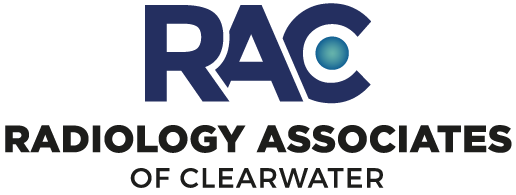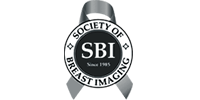Neuroradiology
MRI
Diffusion Tensor Imaging
Diffusion imaging is used as an adjunct to our routine MRI brain examination. Diffusion measures the movement of water in the brain, detecting areas where the normal flow of water is disrupted and evaluating the white matter tracts. Diffusion tensor imaging has shown promise in numerous applications including multiple sclerosis and seizure disorders. A disrupted flow of water indicates where there could be an underlying abnormality.
Magnetic Resonance Spectroscopy
Magnetic Resonance Spectroscopy (MRS) is used as an adjunct to our routine MRI brain examination. MRI is used to create multi-dimensional pictures of your brain in order to look for differences in structure. Information gathered during the MRI portion of the exam is analyzed using Spectroscopy, which looks at the chemical make-up of different brain regions. Our neuroradiologists are experts in MRS having published major papers in the field. Spectroscopy can be used in a variety of conditions, including brain infections, tumors and demyelination.
CSF Flow Analysis
Cerebral Spinal Fluid (CSF) flow imaging is used as an adjunct to our routine Magnetic Resonance Imaging brain examination. The CSF flow exam will assess normal and abnormal pathways of cerebral spinal fluid drainage (the fluid found in the spinal cord and around the brain). This has shown promise in the evaluation of normal pressure hydrocephalus and Chiari I malformations.
Brain Perfusion
Perfusion imaging is used as an adjunct to our routine MRI brain examination. Perfusion uses injected contrast (dye) to check the flow of blood to normal tissue and diseased tissue. Our neuroradiologists have active research ongoing in perfusion and participate in clinical trials. Perfusion has been shown to add value in the diagnosis and follow up of tumors as well as stroke evaluation and demyelination.
Weight Bearing MRI
With the addition of weight bearing™ MRI to our facility in Mease Dunedin, we now offers the most comprehensive suite of high-field MRI services to meet your unique needs. The weight bearing MRI has the most advanced technology currently available for diagnosis of mechanical back and joint pain.
Weight Bearing MRI is now available if you are in need of a positional or weight-bearing study to evaluate your spine or joints for an accurate diagnosis. Your physician may request an upright or weight bearing scan because this can simulate your position as if you were sitting, standing or lying down in the position that helps visualize different areas of the anatomy. While other scanners that perform similar maneuvers, the scan times in those are longer and the image quality weaker as they have a field strength of only 0.6T. By comparison, the Dunedin MRI has a field strength of 3T surpassing the other scanners in quality and speed.
A weight bearing MRI is equivalent to an upright or stand up MRI, yet produces higher quality pictures at faster speed.
Preparation for your exam
Preparation for your MRI will depend on the type of exam; a representative will call you prior to your appointment to provide specific instructions, and review health and insurance information.
Please bring previous imaging study results (MRI, CT, x-rays) such as reports, films or CD-Roms, if available.
Because of the magnetic field, you will be asked to wear metal-free clothing, or to change into a gown. You also will be asked to remove any metallic objects, such as jewelry, watches, and hair clips.
Inform your technologist of prior surgeries or metal implants, such as pacemakers or aneurysm clips.
Notify a member of staff if your are nursing or if there is a chance you could be pregnant.
Please arrive 15 minutes early to verify your registration.
What to expect during the procedure
You will lie on a cushioned table and often an imaging device called a “coil” will be placed around the area of the body to be scanned.
Once you are comfortably positioned, the table will move into the magnet opening.
As images are acquired, you will hear “knocking” or “buzzing” sounds for a few minutes at a time. It is important to lie as still as possible during this part of the exam to help us capture clear images.
If necessary, physician-administered medication is available to help you relax.
In some cases, you will need contrast material to further aid in detection or diagnosis of potential abnormalities. In this instance, an I.V. will be placed in your hand or arm. Once the contrast is injected, you will feel a warm, flushed sensation, and may experience a metallic taste in your mouth that lasts for about two minutes.
What to expect after the procedure
A radiologist who specializes in a specific area of the body will review your images.
The radiologist prepares a detailed diagnostic report to share with your doctor.
Your doctor will consider this information in context of your overall care, and talk with you about the results.
CT
Brain Perfusion
Perfusion imaging is used as an adjunct to our routine CT brain examination. Perfusion uses injected contrast (dye) to check the flow of blood to normal tissue and diseased tissue. Our neuroradiologists have active research ongoing in perfusion and participate in clinical trials. Perfusion has been shown to add value in the diagnosis and follow up of tumors as well as stroke evaluation and demyelination.
Weight Bearing CT and CT Myelography
With the addition of weight bearing™ CT to our facility in Mease Dunedin, we now offers one of the few location in the United States with the most advanced technology currently available for diagnosis of mechanical back and joint pain.
Weight Bearing CT is now available if you are in need of a positional or weight-bearing study to evaluate your spine or joints for an accurate diagnosis. Your physician may request an upright or weight bearing scan because this can simulate your position as if you were sitting, standing or lying down in the position that helps visualize different areas of the anatomy. There are no other facilities in Florida offering Weight Bearing CT at this time.
Preparation for your exam
Preparation for your CT will depend on the type of exam; a representative will call you prior to your appointment to provide specific instructions, and review health and insurance information.
Notify a member of staff if you are nursing or if there is a chance you could be pregnant.
Bring prior x-rays or scans with you to your exam, if instructed.
Please arrive 15 minutes early to verify your registration.
What to expect during the procedure
You will lie on a cushioned table, and once comfortably positioned, the tabletop will move through a gantry (shaped like a big donut), which houses the x-ray tube and a set of detectors.
In some cases, a special “coil,” a device to hold part of your body, is used to ensure proper alignment.
Multiple, low-dose x-rays are passed through the body at different angles. Images are acquired by detectors that measure the x-rays that pass through your body.
The computer processes this information to form an image that the radiologist will review and interpret.
Some CT studies require a contrast material to enhance the visibility of certain tissues or blood vessels. In this instance, you are given an I.V. in your hand or arm. Once the contrast is injected, you may feel a warm, flushed sensation, and experience a metallic taste in your mouth that lasts for about two minutes.
You will receive special instructions if your exam requires you to consume an oral contrast agent (barium sulphate) in advance.
Depending on the type of exam, your CT scan can take anywhere from 10-30 minutes.
What to expect after the procedure
A radiologist who specializes in a specific area of the body will review your images.
The radiologist prepares a diagnostic report to share with your doctor.
Your doctor will consider this information in context of your overall care, and talk with you about the results.









